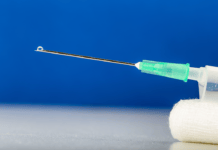The new office I work for has refusal forms for everything: X-rays, perio chart, SRP, etc. To me, this is supervised neglect for over two years of X-rays and one year for periodontal charting. I’m not sure about non-surgical periodontal therapy/SRP. I had one patient who had not had a perio chart in several years due to refusal. I explained to the patient why it was so important, and she allowed me to chart. I know the patient has a right to refuse treatment, but diagnostic tools? Also, how does that work for non-surgical periodontal therapy/SRP? Is the office legally covered with signed refusal forms?
The adjustment of starting at a new office and learning the inner workings and protocols can be challenging, especially when you discover the standard of care doesn’t necessarily align with yours. Before I dive into your questions, a brief overview of the standard of care and supervised neglect might be helpful regarding refusal forms.
Generally speaking, the standard of care is more of a legal term than a medical or dental term, which means “the benchmark that determines whether professional obligations to patients have been met” and “what reasonably prudent similar health care providers are doing under similar circumstances.”1
The standard of care has been described as “a continuum, with barely acceptable care at one end, and the ultimate in care at the other end.”1 It does not necessarily mean optimal care or what could be considered best practices. Some might say that the standard of care is essentially a baseline – the lowest standard clinicians can treat patients while remaining ethical.
Falling below this baseline is negligence or supervised neglect and may risk significant consequences.1 Supervised neglect refers to “the situation where a patient’s oral health has been allowed to deteriorate over a period of time, in spite of regular attendance at the dentist for treatment and care.”2
According to The Dentists Insurance Company, a professional liability insurance provider, “If patients fail to proceed with treatment that would put their oral health at risk, dentists have the prerogative to dismiss them from care. It is common for patients to ask to delay treatments due to financial concerns, but if necessary treatments are delayed for extended periods of time, it can result in supervised neglect. A signed informed refusal form does not exonerate a dentist from liability, as dentists are obligated to practice at a certain standard of care.”3
The American Dental Association (ADA) states, “Having a patient sign a consent form does not satisfy your legal duty to discuss proposed treatment with the patient. Failure to have that conversation is a breach of your moral responsibility to the patient and, in the event of a malpractice lawsuit, could even raise questions about whether you actually received informed consent.”4 The ADA further states, “If a patient refuses treatment, you must decide whether or not to keep them in your practice.”4
My interpretation of this is that refusal forms are something to be used until a patient’s continuing to refuse gets to the point of a clinician not providing the standard of care, resulting in supervised neglect.
For example, radiographic guidelines put forth by the ADA, in collaboration with the U.S. Federal Food and Drug Administration (FDA), recommend that a recall patient who is an adult or adolescent with permanent dentition with clinical caries or at an increased risk for caries should have posterior bitewing radiographs every 6-18 months.5 If this patient refuses radiographs, they should sign a refusal form each time they refuse. However, once it reaches the point of dipping below the standard of care and possible supervised neglect, which, according to ADA recommendations, is over 18 months, it may be time to refer the patient to a different dentist and dismiss them.
Regarding the frequency of periodontal charting, I agree with you that patients need thorough periodontal charting at least once per year to provide comprehensive treatment, and so does the American Academy of Periodontology.
The American Academy of Periodontology states, “Patients should receive a comprehensive periodontal evaluation, and their risk factors should be identified at least on an annual basis.”6 This includes “measure probing depths, the width of keratinized tissue, gingival recession, and attachment level; to evaluate the health of the subgingival area with measures such as bleeding on probing and suppuration; to assess clinical furcation status; and to detect endodontic-periodontal lesions.”6
As far as a patient refusing non-surgical periodontal therapy/SRPs (NSPT), again, this falls back to the question of how long you should continue to treat a patient until you get to the point of not providing the standard of care and pushing the line of possible supervised neglect. It’s hard to give a definitive answer regarding how long is too long for a patient to refuse NSPT because every patient is in a different disease stage, and the rate of periodontitis progression (grade) can vary widely based on many contributing factors.
If a patient refuses NSPT, I have seen some suggest having a patient sign a refusal form and perform a less ideal treatment, such as a full mouth debridement. I believe the stance here is that some treatment is better than no treatment, so it’s assumed the liability risk is low with or without a signed refusal, and this route makes dismissing a patient unnecessary.
Not all would agree, but I’m not on board with performing substandard care if a patient declines definitive treatment based on their oral health status. It’s one thing to perform an alternative treatment that is still within the standard of care, but I feel it’s another to perform substandard treatment.
I also don’t think using a procedure code not as intended according to its nomenclature and/or descriptor, such as using the full mouth debridement procedure code (D4355) in this way, is appropriate. The 2023 ADA Guide to Reporting Full Mouth Debridement, Version 2, which includes more information, can be found here.7
I don’t claim to be a CDT code expert, but the way I understand it, this procedure code is to be used when there is so much biofilm, calculus, bleeding, or debris that a periodontal evaluation that would allow a proper diagnosis cannot be performed. The nomenclature does not seem to indicate a full mouth debridement can be used for a patient if they refuse NSPT. To me, this makes this a misuse of this procedure code. Misuse of procedure codes risks the possibility of insurance fraud, but that’s a whole other can of worms. Again, this is my interpretation, and interpretations can get muddy. Please see the Guide for information directly from the ADA.
There can be consequences to the patient if treatment that is less than ideal is performed. For example, if a debridement is performed instead of NSPT, a patient may assume they had their “teeth cleaned,” so they need no further treatment. This may lessen the gravitude of their oral health diagnosis and lead to poor oral health outcomes.
Another consequence of performing a full mouth debridement on a patient who requires NSPT is that it leaves the clinician in the position to do the best they can with the time they are given, which is most likely less time than would be given for NSPT. This is not ideal for the patient or the clinician.
If the patient isn’t anesthetized and is too tender for the clinician to scale to completion, incomplete calculus removal may result. If residual calculus is left or lodged deeper into the periodontal pocket, it may lead to a periodontal abscess.9,10 Further, the marginal gingival tissue may heal slightly and tighten up, making further instrumentation and thorough removal of subgingival calculus difficult.
Because of these reasons, I’m not confident that having a patient sign a refusal and performing a less ideal treatment, such as full mouth debridement, is the best approach in this situation.
In my experience, after so many times of a patient refusing periodontal treatment, radiographs, or any other assessment modalities or treatments, the doctors I’ve worked for would refer the patient to a different doctor for a second opinion or dismiss the patient and give a list of other providers where the patient can seek treatment. The reasoning was that they simply couldn’t and wouldn’t take part in potential supervised neglect and take on the potential liability and risk to their license.
The choice to dismiss a patient is not always easy because it may feel like you are between a rock and a hard place as a clinician. It may feel wrong not to provide the appropriate treatment, but it also seems wrong to dismiss a patient because they don’t see the value of treatment despite exhaustive efforts to explain and educate.
Some might argue that a medical doctor wouldn’t dismiss a patient because they won’t take their high blood pressure medication or seek treatment for their cancer diagnosis. On the contrary, medical doctors can dismiss patients for reasons such as non-compliance with a treatment plan, broken appointments, non-payment of services, rude or abusive behavior, or drug-seeking behavior. While medical doctors can dismiss a patient, they must avoid patient abandonment, the same as dentists must.8
Also, like dentists, medical doctors may still examine the patient; however, at the same time, they aren’t giving substandard treatment to compensate for the patient’s refusal or non-compliance with treatment, as dental professionals may feel they should sometimes do. Some may not agree, but in my opinion, comparing medical doctors to dental professionals in this way isn’t always an apples-to-apples comparison.
With all this said, if a patient refuses treatment or diagnostic modalities, inform the patient of the risks related to refusal. Ensure you comprehensively document a patient’s refusal, as your license depends on it because it might. Chart notes are legal documents, and as the saying goes, if it isn’t written down, it didn’t happen. According to the ADA, documentation should include what you discussed with the patient, the patient’s reason for the refusal, and the patient’s understanding of risks.4
While patients have the right to refuse treatment and diagnostic modalities, dental clinicians have an ethical responsibility to abide by the standard of care. Ethically, clinicians should not participate in supervised neglect. We live in a litigation-happy society, so falling back on refusal forms with the assumption that the clinician is protected might be risky.
I feel that your concerns about the use, or perhaps overuse, of refusal forms are valid. Have you approached the doctor about your concerns? I ask because your doctor may not know there could be an issue.
If you haven’t, that might be a good first step. It could also be a good way to see if there’s an openness to update protocols at your new office. Perhaps you could show the doctor the ADA guidelines for informed consent/refusal and radiograph frequency, along with the Academy of Periodontology recommendations regarding periodontal charting/evaluations.
If there is an openness to updating protocols, perhaps these guidelines and recommendations can be a guide for those updates and help get everyone in the office on the same page. Updating your office’s protocols will likely be a win-win situation for all involved. Patients will receive better care, which may decrease the risk of potential liability concerns for those providing care.
On the other hand, if office protocols are firm as is, and there’s no indication of openness to change, you might need to ask yourself if the office is the best fit for you. Whether you are new to an office or not, I feel it’s important to be on the same page with your doctor, team members, and the office as a whole when it comes to the standard of care and office protocols.
No office is perfect, and all have their quirks, but some things might simply be beyond your comfort level. You need to sleep at night knowing you provided the best treatment for every patient. And in this case, you need to sleep at night, not fearing your license or reputation as a great clinician is at risk. Any dental board reprimand on your license or complaint filed in court is a public record. Anyone can look it up, including patients, potential employers, or state dental boards if you are obtaining licensure in a different state.
I commend you for questioning things that don’t seem quite right. I hope you and your new office can get on the same page or at least come to a comfortable compromise regarding the standard of care and refusal forms!
The information contained in this article is provided for informational purposes only and should not be construed as legal advice on any subject matter. Readers should not act or refrain from acting on the basis of any content included in this article without seeking legal or other professional advice.
Before you leave, check out the Today’s RDH self-study CE courses. All courses are peer-reviewed and non-sponsored to focus solely on high-quality education. Click here now.
Listen to the Today’s RDH Dental Hygiene Podcast Below:
Updated December 30, 2023
References
- Vanderpool, D. The Standard of Care. Innovations in Clinical Neuroscience. 2021; 18(7-9): 50-51. https://www.ncbi.nlm.nih.gov/pmc/articles/PMC8667701/
- Sykes, L.M., Evans, W.G., Gani, F. “In My Mouth”: Part 11: Ethical Concerns Regarding Treatment and Under-treatment. SADJ. 2017; 72(6): 281-283. http://www.scielo.org.za/pdf/sadj/v72n6/11.pdf
- Ending the Dentist-Patient Relationship: Protect Your Patients, Protect Yourself. (2016). The Dentists Insurance Company. https://www.tdicinsurance.com/Portals/0/pdfs/lifeline/lifeline_2016_fall.pdf
- Informed Consent/Refusal. (n.d.). American Dental Association. https://www.ada.org/resources/practice/practice-management/managing-patients-informed-consent-refusal
- The Selection of Patients for Dental Radiographic Examinations. (2019, June 20). U.S. Food and Drug Administration. https://www.fda.gov/radiation-emitting-products/medical-x-ray-imaging/selection-patients-dental-radiographic-examinations
- American Academy of Periodontology. Comprehensive Periodontal Therapy: A Statement by the American Academy of Periodontology. Journal of Periodontology. 2011; 82(7): 943-949. https://aap.onlinelibrary.wiley.com/doi/pdf/10.1902/jop.2011.117001
- D4355 – ADA Guide to Reporting Full Mouth Debridement. (2023, January). American Dental Association. https://www.ada.org/-/media/project/ada-organization/ada/ada-org/files/publications/cdt/v2_d4355adaguidetoreportingfullmouthdebridement_2023jan.pdf
- Jung, S., McDowell, R.H. (2022, October 3). Abandonment. StatPearls. https://www.ncbi.nlm.nih.gov/books/NBK563285/
- Herrera, D., Retamal-Valdes, B., Alonso, B., Feres, M. Acute Periodontal Lesions (Periodontal Abscesses and Necrotizing Periodontal Diseases) and Endo-periodontal Lesions. Journal of Periodontology. 2018; 89(S1): S85-S102. https://aap.onlinelibrary.wiley.com/doi/10.1002/JPER.16-0642
- Bathla, S. (2017). Periodontal Abscess. In H. Grover & S. Bathla (Eds.), Textbook of Periodontics (1st ed., pp. 218-223). Jp Medical Ltd. https://www.researchgate.net/profile/Harpreet-Grover-2/publication/327246025_Chapter-23_Periodontal_Abscess/links/60cafed192851ca3aca7c881/Chapter-23-Periodontal-Abscess.pdf












